
views
Warm-Ups and Stretches
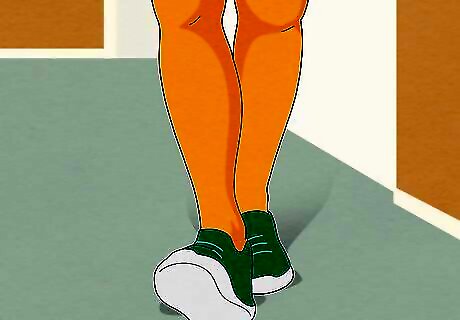
Warm up with 5 minutes of cardio before stretching.. Walk around the room, pace back and forth, or go for a little jog—anything that gets your body moving will do the trick! While stretching is a super important part of mastering your split technique, your muscles need to be nice and warmed up beforehand. Skipping your warm up increases your chance of an injury, which you definitely don’t want!
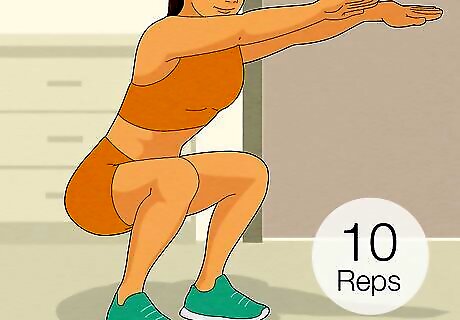
Do some squats to warm up your legs. Stand up straight with your feet spaced slightly wider than your hips. Lower your center of gravity down, pausing only when your thighs are completely parallel with the ground. Then, raise yourself back up to your original position. Reps: 10 total reps Always keep your back totally straight as you squat so you can get the most out of the exercise.
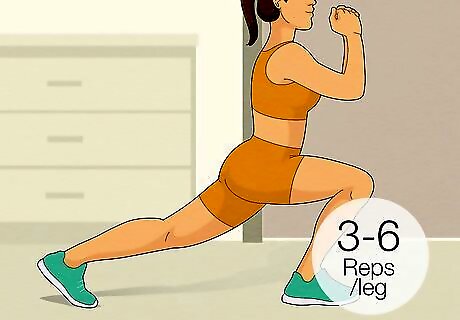
Do forward lunges to stretch your hip flexors. Kneel down on your left knee and bend your right leg in front of you at a 90-degree angle. Lunge forward with your right leg, keeping your back and torso upright as you move. Stay in this position for 5 seconds before repeating the stretch with your other leg. Reps: 3-6 per leg A good lunge provides a comfortable stretch along one side of your groin. The more flexible these muscles are, the easier it will be to do splits.
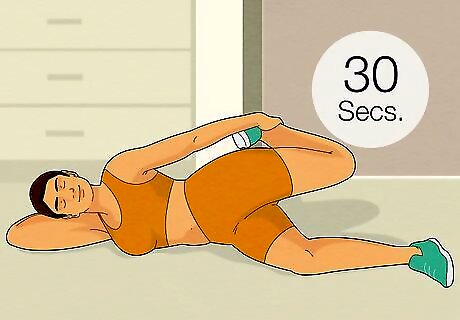
Stretch your hip flexors with a side-lying pose. Lie comfortably on your left side, bending both knees so they stay lined up with your pelvis. Bend your left, forward-facing knee at a right angle as you guide your right leg behind you. Gently grab your right ankle and leg with your right hand, keeping your back straight as you go. Stay in this stretch for around 30 seconds before switching sides. Reps: 3 on each side Hip flexors play an important role in your splits, so it’s important to keep them stretched and flexible.
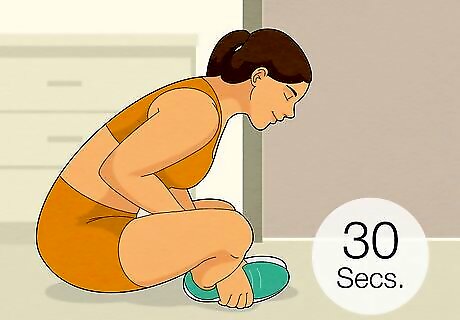
Try the butterfly stretch to work your inner thigh abductors. Sit on the floor with your back straight and both knees pointed out to the sides. Sandwich the bottoms of your feet together and hold them in place with your hands. Then, lean forward and push on your thighs with your elbows for 20-30 seconds—this creates a nice stretch in your inner thighs. Having flexible inner thigh muscles will make your splits easier to achieve.
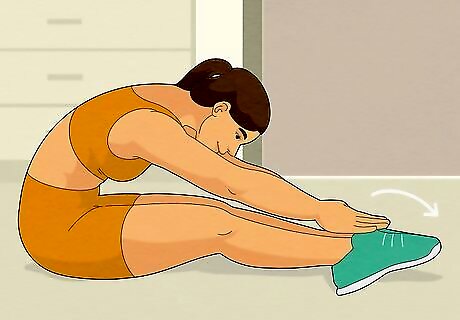
Target your legs with a pike stretch. Sit upright with your legs held together and extended in front of you. Point your toes forward, lock your knees, and lean forward with your back straight and your eyes down. Stretch as far as you comfortably can, holding your position for several seconds. Alternative: Flex your feet and grab onto your toes with your hands. This gives you a really powerful stretch in your calves!

Sit on a bench and stretch each calf. Extend your right leg out so it’s a little bit bent, all while keeping your left foot firmly planted down on the ground. Grab the ball of your right foot with both hands and lightly tug it toward you for 20 seconds. Then, repeat this exercise with your other leg. Hamstring Alternative: Straighten your leg out completely and grab your heel with both hands (rather than reaching for the top of your foot). Then, slowly lean forward, guiding your chest toward your extended leg. Stay in this position for 20 seconds, and then switch legs.
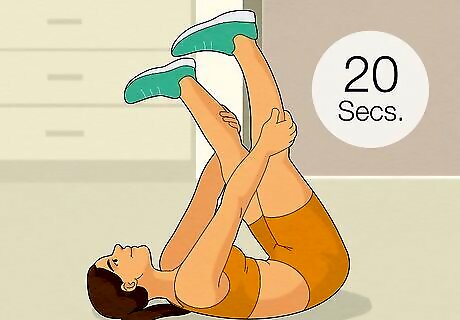
Work your hamstrings in a V-stretch position. Lie flat on your back with your legs lifted straight in the air, keeping your knees straight and angled outward. Then, grab your lower calves with both hands and guide your legs apart in a V-shape. Pull your legs as far apart as you comfortably can, creating a wider V-shape in the air. Hold them in place for 20 seconds. Your ultimate goal is to finish this stretch with both knees touching the ground (with your legs creating a straight line rather than a “V”). It takes a lot of stretching and patience to get this flexible, though, so don’t feel discouraged if you can’t do this right away!
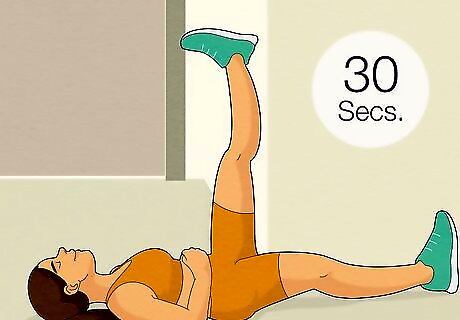
Stretch your hamstrings in a vertical position against a wall corner. Lie flat on your back so your feet are touching the outer edge of a wall or doorframe. Slightly bend your left leg and lift it up, propping it against the wall—your other leg will extend straight ahead, flush against the perpendicular side of the wall. Then, extend your leg so it points upwards, straightening it out as you go. Stay in this position for about 30 seconds before repeating on the opposite leg. Reps: 2-3 per leg For an extra challenge, start the stretch with your bottom flush against the wall. This will give you a more powerful stretch! A bent-over toe touch can also help you stretch your hamstrings.
Proper Split Technique
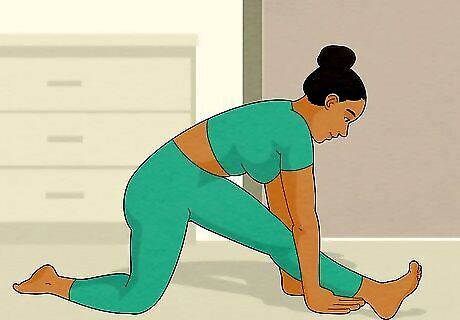
Kneel in a lunging position with your hands on the floor. Pull your left leg in front of you while extending your right leg behind you—this should feel pretty similar to a lunge stretch. Place both hands on either side of your left leg with your palms touching the floor. You can also position yourself with your right leg in front and your left leg behind. It’s up to you!
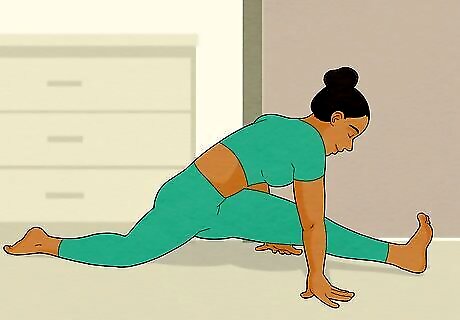
Sink gradually into the floor with a leg extended forward and behind. Guide both legs closer and closer to the floor, keeping them as parallel to the ground as possible. Move your legs in small, gradual increments, so you don’t strain your muscles. Straddle Split Alternative: Point your toes and sit with your legs extended forward in a V-shape. Then, gently guide your feet apart, stretching your legs as you go. Stop stretching once your hamstrings or hips start to tug.
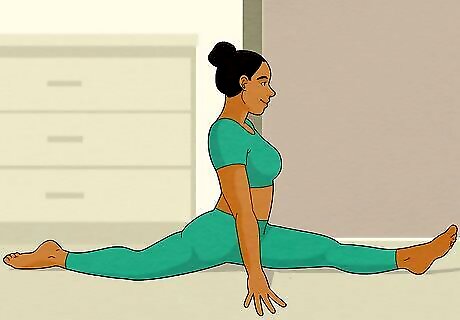
Stop lowering or spreading your legs if the stretch feels painful. That pain is a sign that your body is at it’s limit—and that’s okay! Knowing your limits is the best way to prevent your legs from getting hurt.
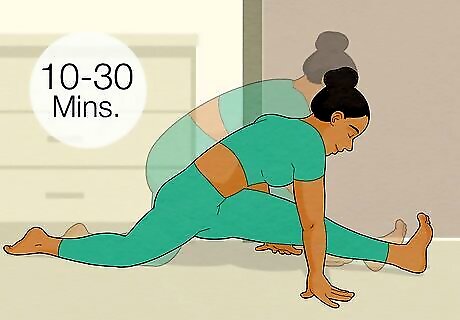
Repeat the technique each day for 10-30 minutes. Set aside a little bit of time each day to stretch, work on your splits, and boost your flexibility. A little hard work can go a long way, and you’ll start to see progress over time! Everyone has different strengths, weaknesses, and limits when it comes to flexibility and physical fitness. Your friend might nail the splits in a week while you’re still struggling to perfect your form. Don’t be discouraged—with enough patience and persistence, you will get those splits down, even if it takes a little longer than you first expected.
Injury Recovery
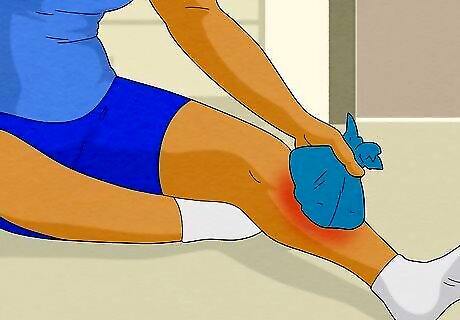
Ice the injured area for 1-2 days. Cover an ice pack with a towel so it doesn’t touch your skin directly. Then, hold the ice over the sore part of your leg for about 15 minutes. Remove the ice for another 15 minutes before using it again. Let’s say you’re icing your leg in the early afternoon—you’d apply the ice from 1:00 to 1:15, remove the ice from 1:15 to 1:30, apply the ice again from 1:30 to 1:45, and remove it again from 1:45 to 2:00.

Prop your leg up so it’s above your heart. Elevating your leg helps prevent major swelling around the injured spot. The extra gravity also helps promote healthy drainage around your injury.
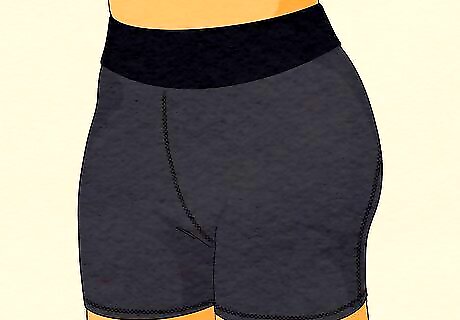
Wear compression shorts or bandages. Like the name suggests, compression shorts and bandages help reduce swelling overall. It also helps keep your injury stable so you don’t end up putting any extra strain or stress on your leg.
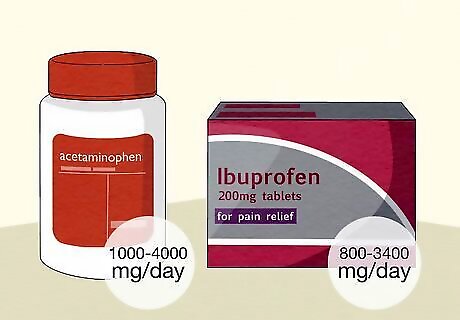
Take painkillers as needed to help with the soreness. Ibuprofen (Advil) and acetaminophen (Tylenol) are both available over-the-counter, and can help reduce any soreness or swelling in your leg after the fact. Just be sure to read and follow the correct dosage instructions before taking anything. Acetaminophen dosage: Take up to 1000 mg per dose; up to 4000 mg per day Ibuprofen dosage: Take up to 800 mg in a single dose; up to 3200 in a single day
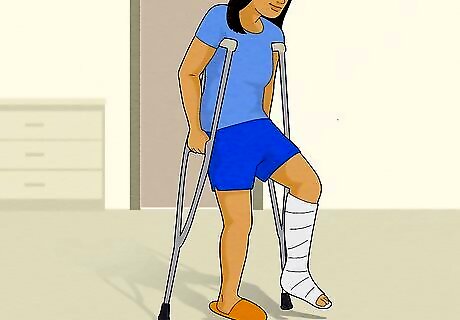
Walk with a cane or crutch if your leg injury is severe. Don’t put any unnecessary weight or pressure on your injured leg as you recover. Instead, use a cane or crutch when you walk so you don’t aggravate your injury.
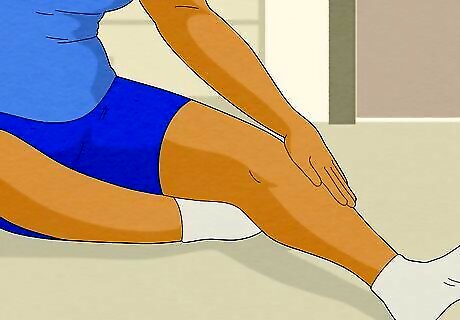
Rest completely until your leg is healed. Take a break from your splits training and any other physical activity for the time being. Give your leg as much time as it needs to heal and recover before starting up your flexibility training again. You could make the injury worse if you continue to stretch and exercise.
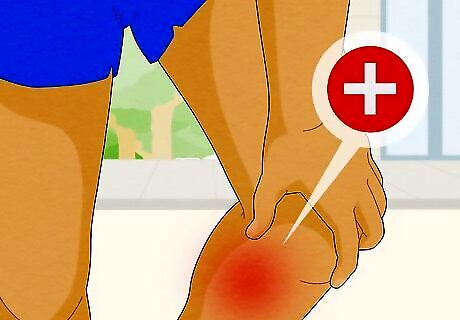
Visit your doctor if the pain is severe or if the injury doesn’t go away. Keep tabs on your symptoms as you rest and recover at home. Is your leg starting to feel better, or is the pain severe and persistent? If your leg is still bothering you or doesn’t seem to be healing, schedule an appointment with your doctor right away. Not sure if you need to see a doctor? Try standing on both feet and see if your injured leg can support you; if it can’t, you should definitely call your physician. You can also try walking a short distance—if you’re feeling serious pain after just a few steps, you should get in touch with your doctor.




















Comments
0 comment